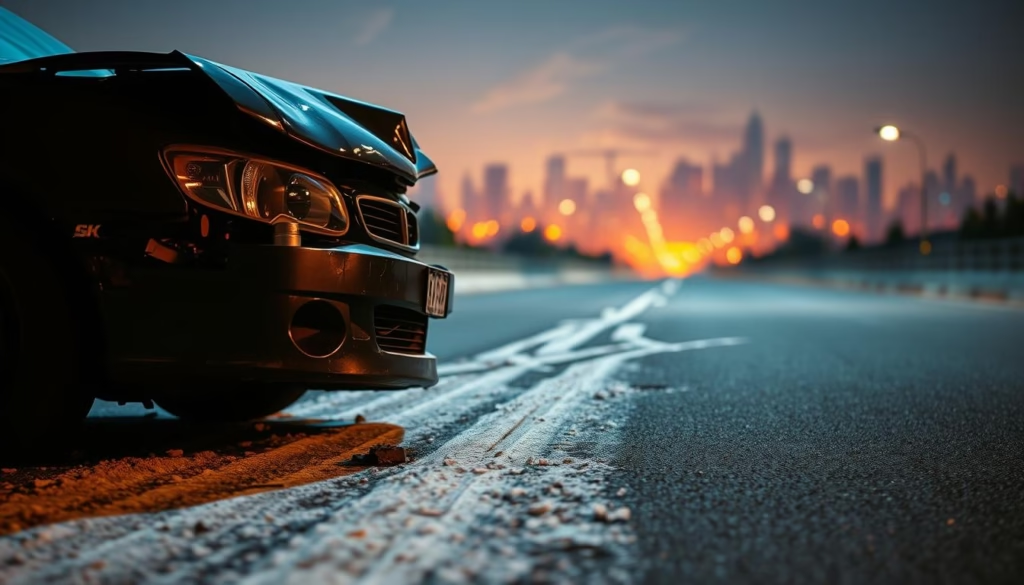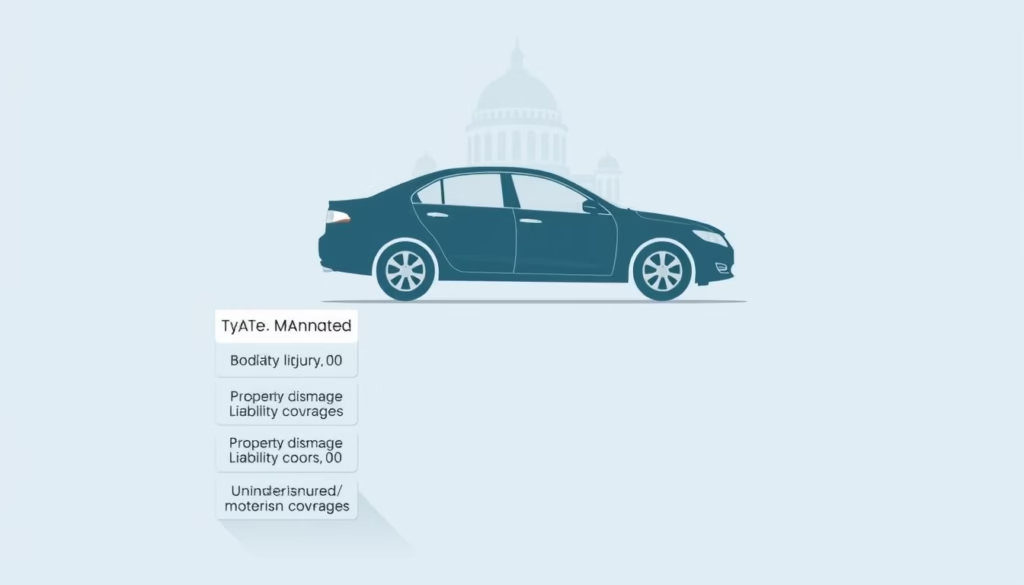Ever wondered how much financial risk you face after a crash? This guide cuts through jargon and shows how property damage coverage works when a vehicle you drive harms another person’s things.
Think of liability as the part that pays for repairs and replacements after an accident the policy deems your fault. It helps protect your savings when costs exceed a simple fix.
We explain where property damage liability fits in your overall coverage and how it differs from collision or comprehensive plans. You will see typical limits on a declarations page and how state rules affect the minimums you must carry.
Want a quick primer on choosing the right amount of protection or common exclusions? Read on, and check this helpful overview from Progressive for additional context.
Key Takeaways
- Liability covers repairs to others’ vehicles and other items you harm while driving.
- Limits vary by state, so minimums may not match your real exposure.
- Collision covers your vehicle; liability handles third-party losses.
- Choosing a higher limit can reduce out-of-pocket risk after a serious accident.
- Review your declarations page to confirm the type and amount of coverage.
What is property damage in car insurance and what does it cover?
Learn how the coverage that handles third-party repair bills operates after a driver-caused crash. Property damage liability sits inside your broader auto liability and pays for loss to another person’s items when you are at fault.
Typical items covered
It usually pays for repairs or replacement of another vehicle and for damage to structures like garages, fences, mailboxes, utility poles, signs, trees, and landscaping.
Legal costs and business interruption
Beyond repairs, this protection often helps cover legal defense fees and, sometimes, lost income when a nearby shop must close because of a crash.
“Limits apply per accident, so one cap covers all affected vehicles and structures.”
Common exclusions and limits
Excluded uses often include rideshare or commercial auto operations, use without owner consent, and racing or stunts. Medical bills are not covered.
| Scenario | Covered? | Notes |
|---|---|---|
| Other vehicle repairs | Yes | Paid up to policy limit per accident |
| Fence or mailbox | Yes | Repairs or replacement included |
| Rideshare or hired use | No | Often excluded unless endorsement added |
How property damage liability differs from other auto insurance coverages
This section compares how liability that pays others differs from coverages that pay for your own repairs.
Property damage liability pays third parties for harm you cause to other vehicles or things. Collision coverage, by contrast, covers repair or replacement of your own vehicle after an accident, regardless of fault.

Property damage liability vs. collision
One pays another person or business. The other pays you. Collision can be optional unless a lender requires it, while liability coverage is often mandatory by state law.
Property damage vs. bodily injury liability
Both sit under the liability umbrella. Bodily injury liability handles medical costs for people hurt by your driving, while the property portion handles loss to things.
Finding your limits on your policy
Many declarations pages show three numbers like 50/100/25. The last figure is the per-accident limit for property loss. That cap applies to all affected vehicles and structures in one event.
- Example: 50/100/25 = $50K per person BI, $100K per accident BI, $25K property per accident.
“Check limits carefully — inadequate liability can leave you responsible for excess costs.”
For a quick primer on liability breakdowns, see this overview on bodily injury and property damage liability or read more about full coverage options at auto insurance full coverage.
State minimums, coverage limits, and choosing the right amount today
State rules set the baseline for coverage, but those minimums often fall short of real-world repair bills.
Nearly every state requires some liability, yet many legal minimums remain low.

Minimums vary by state
Some states set very low numbers. Massachusetts and Pennsylvania both require $5,000 per accident for property losses.
That small amount can be eaten up quickly by modern parts and specialized labor.
Why higher limits matter
Rising cost for parts and repair labor means a single crash can exceed minimums fast.
In multi-vehicle events, one per-accident cap must cover all vehicles and structures along a busy road.
“Choosing higher limits reduces the chance of out-of-pocket bills or court judgments.”
- Start with state requirements as a legal floor, then compare likely repair cost scenarios.
- Advisors often recommend at least $25,000 where minimums are low and up to $250,000 for stronger protection.
- Your insurance company can show premium changes as you raise limits and explain how a policy applies if both a vehicle and a building are harmed.
For a clear summary of minimums by state, see this minimum coverage guide.
Conclusion
Summing up, good liability choices keep a single mishap from wrecking your finances.
This coverage pays others for repairs or replacement after an accident, while collision handles your own vehicle and bodily injury covers people.
Review your declarations page to confirm how limits appear and note that the last figure in a three-number format shows the per-accident property limit. If you have questions about exclusions like rideshare or business use, ask your insurance company or agent for clear answers.
For a focused primer, see this property-damage liability overview and adjust limits so your policy matches likely repair costs and road risks.
FAQ
What does property damage liability cover after a collision?
Property damage liability covers repairs or replacement for other people’s cars and for physical items you hit, such as fences, mailboxes, utility poles, buildings, and landscaping. It can also help pay for legal defense if you’re sued over the incident.
How does property damage liability differ from collision coverage?
Property damage liability pays for harm you cause to others’ items. Collision coverage pays to fix or replace your own vehicle after a crash, regardless of fault. Liability protects third parties; collision protects your car.
How is property damage liability different from bodily injury coverage?
Liability for bodily injury covers medical costs, lost wages, and legal fees when you injure others. Property damage liability handles damaged things. Both are part of liability protection but address separate losses.
What limits appear on my policy and what does a format like 50/100/25 mean?
The three-number format lists maximum payouts: the first two typically apply to bodily injury per person and per accident, and the last number is the property damage limit per accident. For example, 50/100/25 means ,000 available for property damage in a single crash.
When will liability pay legal fees and business losses after an at-fault accident?
If your policy’s liability applies, it usually covers legal defense costs and settlements tied to covered claims. Some business-related losses may be covered if the policy permits, but commercial activity like paid rides or delivery often requires separate commercial coverage.
What kinds of incidents are excluded from liability coverage?
Typical exclusions include use for ride-hailing or commercial delivery without proper coverage, intentional acts, racing, borrowing a vehicle without owner consent, and medical bills for you or your passengers, which are handled differently.
How do per-accident limits work when multiple vehicles or properties are involved?
A per-accident limit is the total the insurer will pay for all property damage from one crash, even when multiple cars or structures are hit. If damage exceeds that limit, you may be responsible for the balance.
How do state minimums affect the amount of liability I must carry?
Each state sets minimum liability requirements. For example, Massachusetts and Pennsylvania require at least ,000 for property damage per accident. Minimums vary widely, so you should check your state’s laws and your policy documents.
Why should I choose limits higher than the state minimum?
Higher limits reduce the risk of paying out of pocket when repair or replacement costs exceed minimums. Rising repair bills, totaled vehicles, and multi-vehicle crashes can quickly surpass low limits, leading to lawsuits or personal liability.
Will liability cover damage if I lend my car to a friend?
Most personal liability follows the vehicle, so the vehicle owner’s liability typically applies when a permitted driver causes a crash. Coverage may not apply if the friend used the car without permission or for excluded commercial activities.
If I damage a utility pole or mailbox, how is the claim handled?
Report the claim to your insurer, which will assess liability and pay repair or replacement costs up to your policy limit. The claim may be settled with the property owner or their insurer, and a deductible usually does not apply to liability payouts.
Can my insurer deny a property damage claim if I was racing or committing a crime?
Yes. Insurers routinely exclude coverage for intentional wrongdoing, racing, and criminal acts. If those conditions apply, your carrier can deny the claim and you could face criminal and civil consequences.
How do I find my property damage limit on my policy declaration page?
Look at the liability section on the declarations page. The limit is usually the last number in the liability trio (for example, 50/100/25), or it may be listed under “property damage liability” with a dollar amount shown.
What steps should I take after causing damage to someone’s vehicle or property?
Ensure safety, exchange contact and insurance details, document the scene with photos, notify police if required, and report the incident to your insurer promptly. Cooperate but avoid admitting fault while authorities and your insurer investigate.